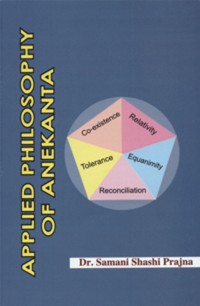The substance is anekāntika. It has two meanings: the first meaning is, it is of triplicate nature of origination, cessation and permanence. Therefore, it can be said as anekāntika. The second meaning is that the substance has many innumerable or infinite modifications; therefore it has infinite attributes.
Modifications have two varieties: the intrinsic modifications (arthaparyāya) and the visible modifications (vyañjana paryāya). The intrinsic modifications are subtle; they change with the minutest unit of time (samaya, the smallest unit of time, which is further indivisible). This change has twelve stages.[1]
The subtle modifications cannot be known through the senses. They are the object of super-sensuous consciousness. The visible modifications are gross. They manifest themselves and, therefore, can be known through the senses also. It is in the case of these gross modifications that we can think of both, the possible and the probable. A colour can change into another colour, a smell into another smell, a taste into another taste, and a touch into another touch. Yati Bhoja has described two types of potentialities-the potentiality, which can be actualized at a distant time (oghaśakti) and the potentiality, which can be immediately actualized (samucitāśakti).The former is the mediate cause, while the latter is the immediate cause of change. Grass has the potentiality of becoming ghee at a distant future. Curd can change into ghee immediately. The potentialities are too many to be enumerated. Theoretically, it could be said that potentialities of an object are innumerable as far as the mediate form of potentiality is concerned.[2] A scientist through his research can know a few of these. A person, with the power of super-sensuous knowledge can know them through super-sensuous knowledge. An ordinary man can, however, know only the immediate cause or the visible modifications. We therefore, cannot put any limitation on the possibilities or probabilities. All of man’s hardwork, courage, progress, creativity and plans are based on possibilities and these possibilities cannot be accepted without the perspective of anekānta.Now the two wings of anekānta i.e., syādvāda and nayavāda will be discussed briefly.
 Dr. Samani Shashi Pragya
Dr. Samani Shashi Pragya

